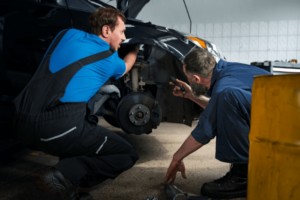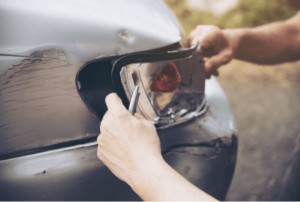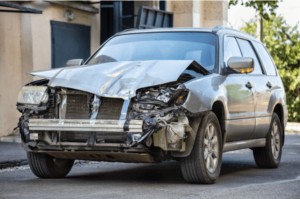Discovering damage to your car bumper can be a frustrating experience. Whether it’s a minor scratch, a noticeable dent, or more significant damage, understanding the repair options and associated costs is essential for making informed decisions. This guide provides a comprehensive overview of bumper repair and replacement costs, helping you navigate the process with confidence.
Bumper Repair vs. Replacement: Which Option is Right for You?
Bumpers are crucial safety components designed to absorb impact and protect your vehicle during collisions. When damage occurs, deciding whether to repair or replace the bumper depends on the severity of the damage and its impact on the vehicle’s structural integrity.
When Bumper Repair is a Viable Option:
- Minor Dents and Scratches: Superficial damage that doesn’t compromise the bumper’s functionality can often be repaired using techniques like paintless dent repair (PDR).
- Superficial Cracks: If cracks are not deep and don’t affect the underlying structure, plastic filler, sanding, and repainting may be suitable repair options.
- Cost-Effectiveness: For older vehicles, repairing even somewhat extensive damage might be more economical than a full bumper replacement.
When Bumper Replacement is the Better Choice:
- Severe Damage: Deep cracks, large dents, or holes can compromise the bumper’s structural integrity, making replacement necessary.
- Multiple Damaged Areas: If the bumper has suffered damage in several places, replacing the entire unit might be more cost-effective and safer.
- Age and Condition: An older bumper that has undergone previous repairs might be better off replaced, especially on luxury vehicles or SUVs.
- Affected Technological Components: Modern bumpers often house components like fog lights and sensors. Damage to these components may necessitate a complete bumper assembly replacement.
Common Types of Bumper Damage
Bumpers are susceptible to various types of damage due to their position on the car. Here’s a breakdown of common issues:
- Dents: Indentations caused by low-speed collisions or bumping into objects.
- Scratches: Surface-level marks or deeper grooves resulting from brushes with other vehicles or objects.
- Cracks: More severe than scratches, typically caused by harder impacts, potentially compromising the bumper’s structural integrity.
- Scuffs and Scrapes: Superficial damage often caused by grazing another surface, leaving paint residue or minor abrasions.
- Holes and Punctures: Serious damage resulting from sharp or pointed impacts, often requiring complete bumper replacement.
- Peeling Paint: Caused by exposure to the elements, minor collisions, or poor paint jobs, leading to paint flaking off the bumper.
Understanding Bumper Repair Costs
The cost to fix a bumper can vary widely depending on the type and severity of the damage, the car’s make and model, and the repair shop’s labor rates.
Average Bumper Repair Costs by Damage Type:
| Type of Damage | Repair Needed | Average Cost |
|---|---|---|
| Minor Dent | Dent Removal | $150 – $250 |
| Scratch | Paint Touch-Up | $100 – $300 |
| Crack | Plastic Welding and Reshaping | $250 – $500 |
| Major Dent | Panel Beating and Repainting | $350 – $600 |



Factors Influencing Bumper Repair Costs:
- Car Make and Model: Luxury or foreign cars may require specialized parts or custom paint, increasing costs.
- Labor Rates: Rates vary by location and shop type, with specialized shops or urban areas often charging more.
- Geographic Location: Material and labor costs can vary by region, with remote locations potentially incurring extra shipping fees.
- Material and Part Availability: Rare or costly bumper materials, especially for newer or luxury models, can raise repair costs.
Bumper Replacement Costs: What to Expect
In some cases, replacing the bumper is a more practical solution than repairing it. Bumper replacement costs range from $500 to $1,500, depending on the car type and model.
Average Bumper Replacement Costs by Car Type:
| Car Type | Average Replacement Cost |
|---|---|
| Economy Car | $500 – $700 |
| Mid-Range Car | $700 – $1,000 |
| Luxury Car | $1,000 – $1,500 |
Assessing Your Bumper Damage: Repair or Replace?
Determining the appropriate repair approach can be challenging. Here’s a checklist to help you assess the damage:
- Inspect the Damage: Carefully examine the bumper for dents, scratches, cracks, or other visible damage.
- Assess the Severity: Determine if the damage is minor, requiring simple repairs like paintless dent repair, or more extensive, potentially necessitating a bumper replacement.
- Check for Hidden Damage: Look for signs of damage to the car’s body near the bumper, which could indicate deeper issues.
- Consider Safety and Functionality: If the damage affects the vehicle’s safety features, seek professional assessment.
- Seek Professional Assessment: For complex or severe damage, consult a reputable repair shop for a detailed evaluation and expert advice.
Insurance and Bumper Repairs: Making the Right Choice
Deciding whether to file an insurance claim for bumper repair or replacement requires careful consideration of your policy and potential premium impacts.
Key Points to Consider:
- Cost vs. Deductible: Compare the repair cost to your deductible to determine if paying out of pocket is more cost-effective.
- Nature of the Accident: Filing a claim for at-fault accidents may increase premiums, while no-fault accidents typically don’t affect rates.
- Frequency of Claims: Filing multiple claims, even for minor damage, can lead to higher premiums.
- Policy Terms: Understand your coverage, including collision repair coverage and accident forgiveness.
- Long-Term Cost: Weigh the long-term cost of increased premiums against immediate repair expenses.
- Claim History: A long, claim-free history might influence your insurance company’s decision on premium adjustments.
Conclusion
Dealing with bumper damage can be stressful, but understanding your repair options and associated costs empowers you to make informed decisions. By carefully assessing the damage, considering your insurance coverage, and seeking professional advice, you can ensure your car is restored to its pre-damage condition efficiently and cost-effectively.